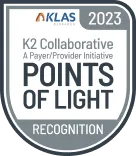Webinar
/
Safeguarding Your Business: Assessing Security Vulnerabilities and Implementing Effective Controls
Date
Time
April 18, 2023
10:00 am
EST
Meet the speakers
About the webinar
Mitigate security risks, prevent phishing scams, and implement strong security measures to secure your healthcare organization.

Achieve your boldest ambitions
Explore how Datavant can be your health data logistics partner.
Contact us



.svg)









